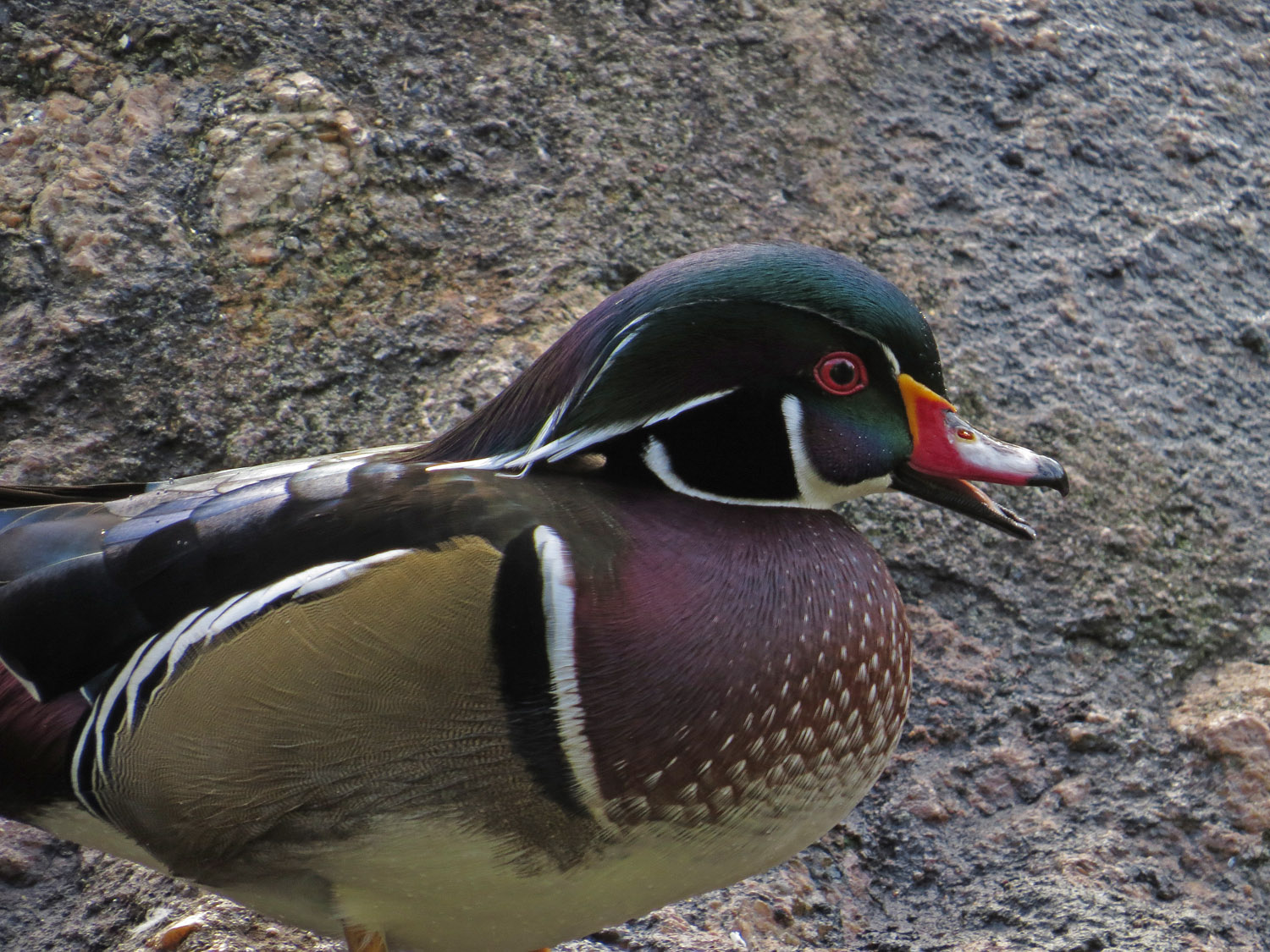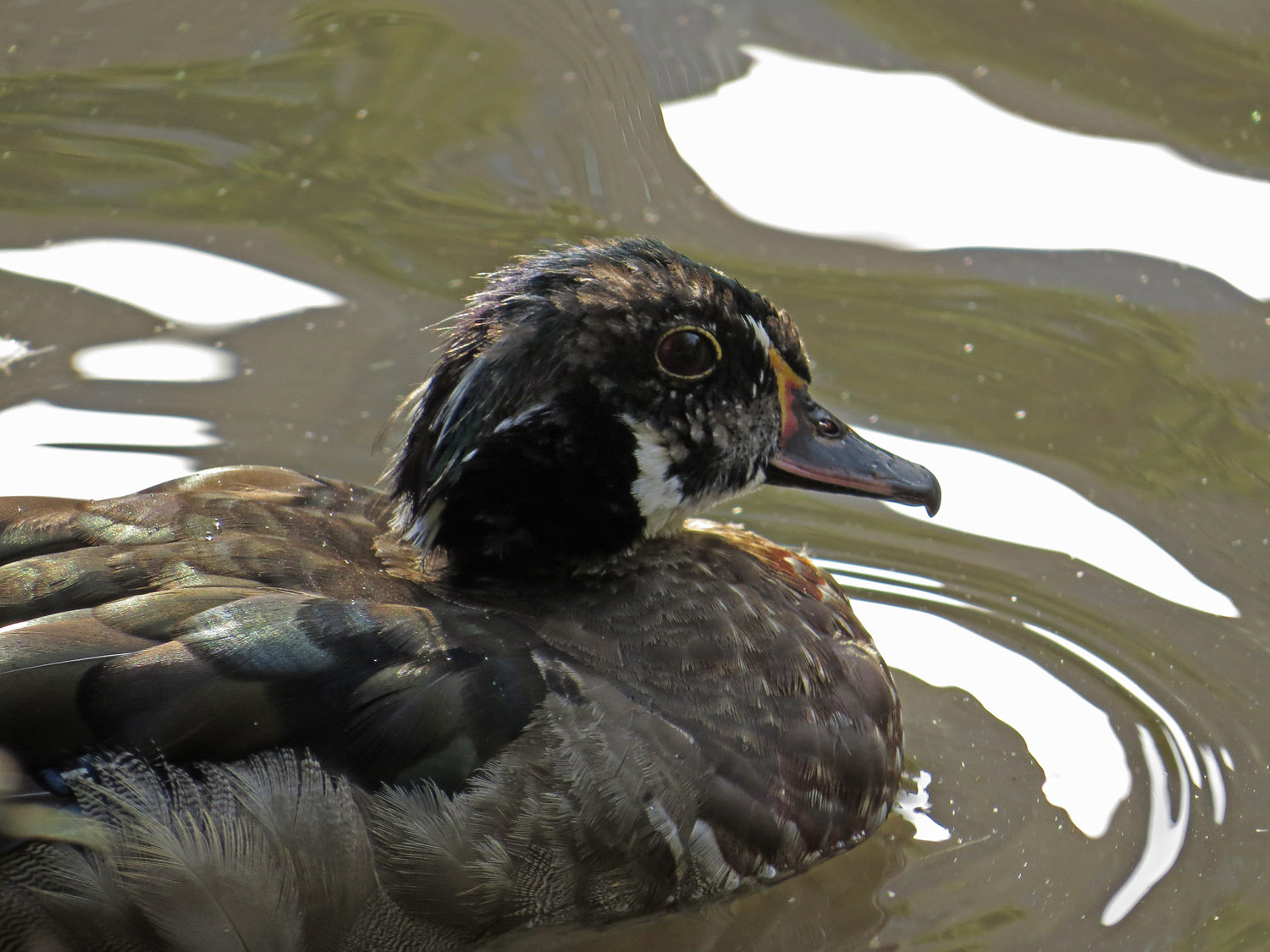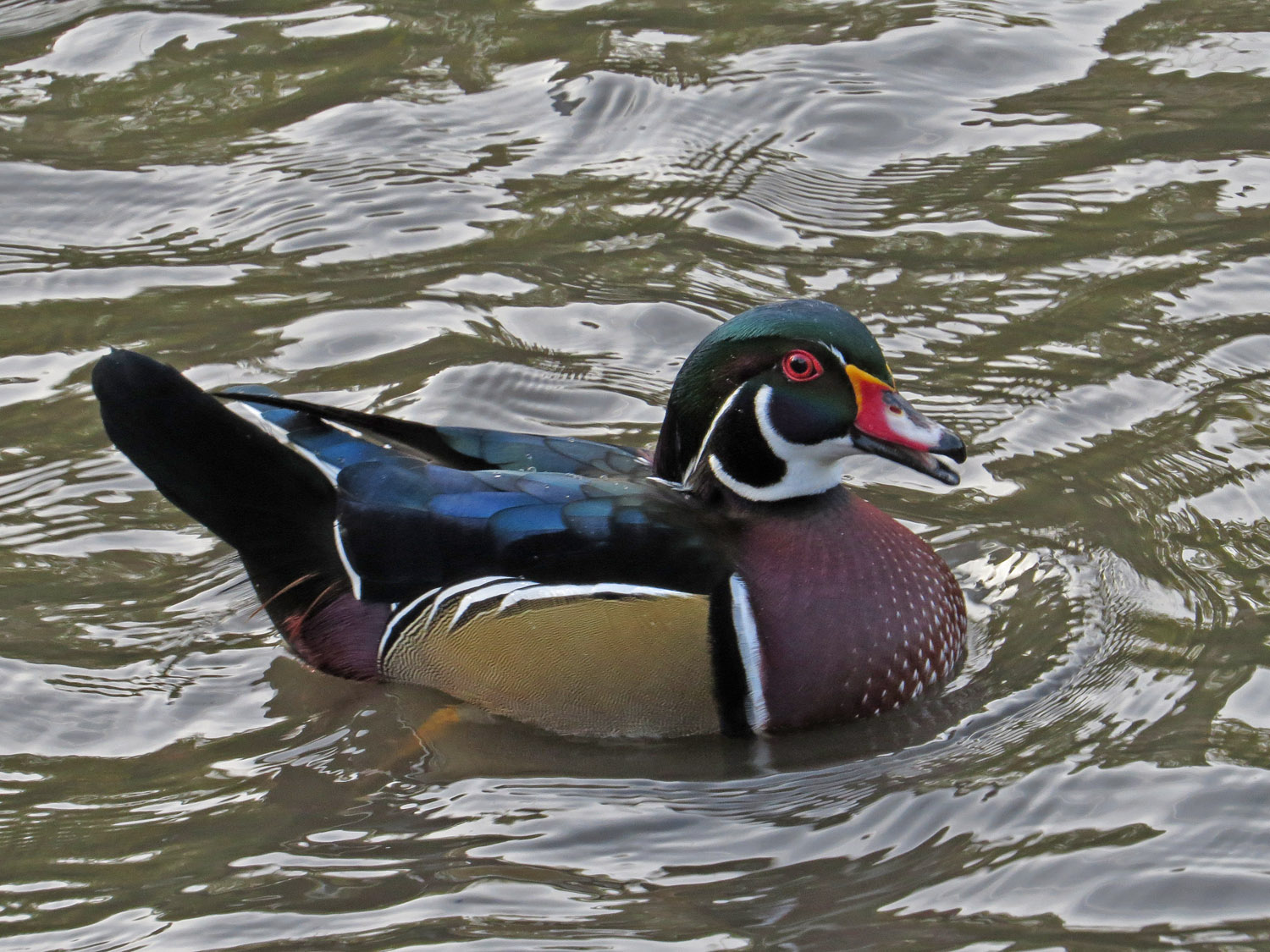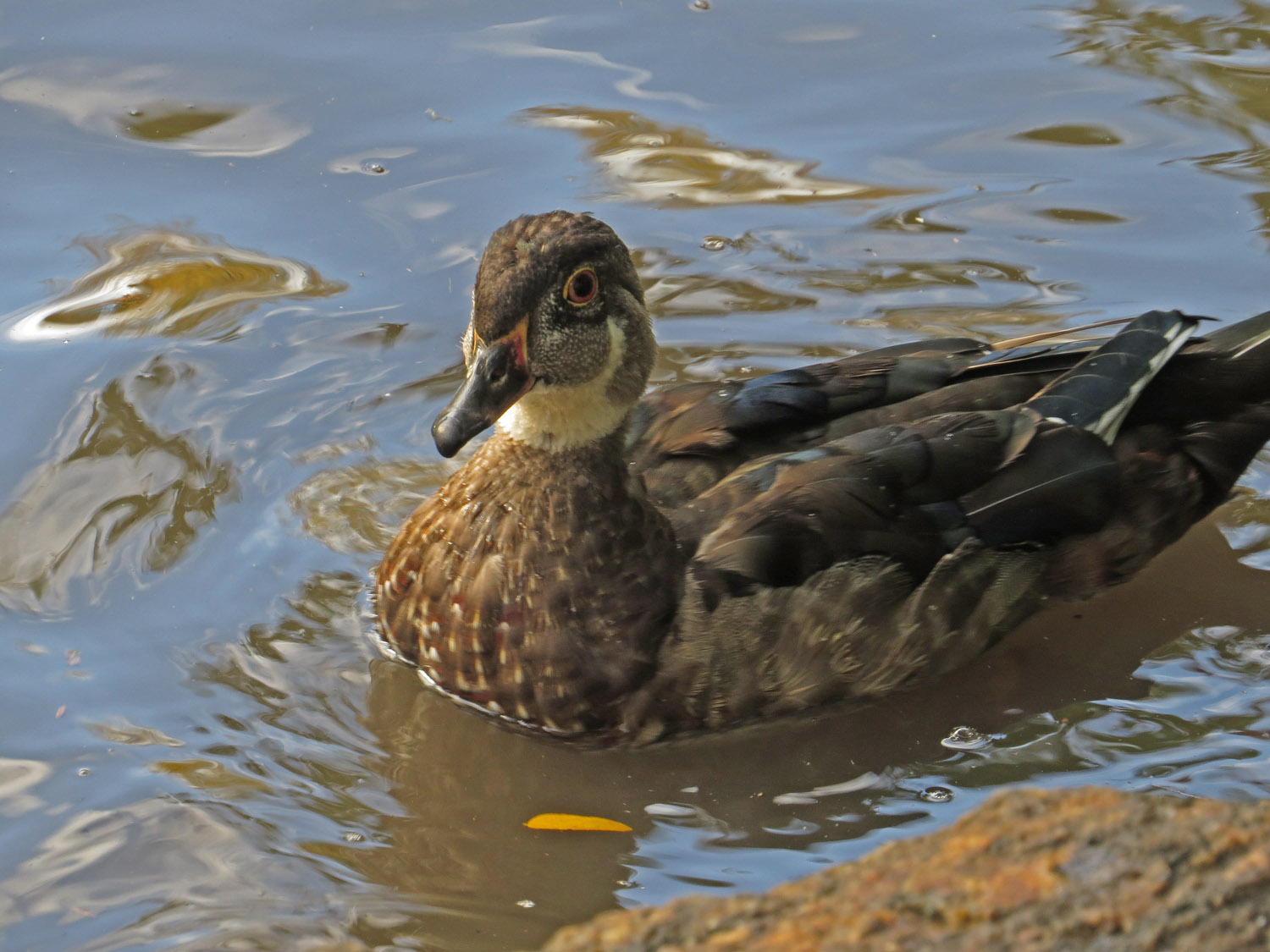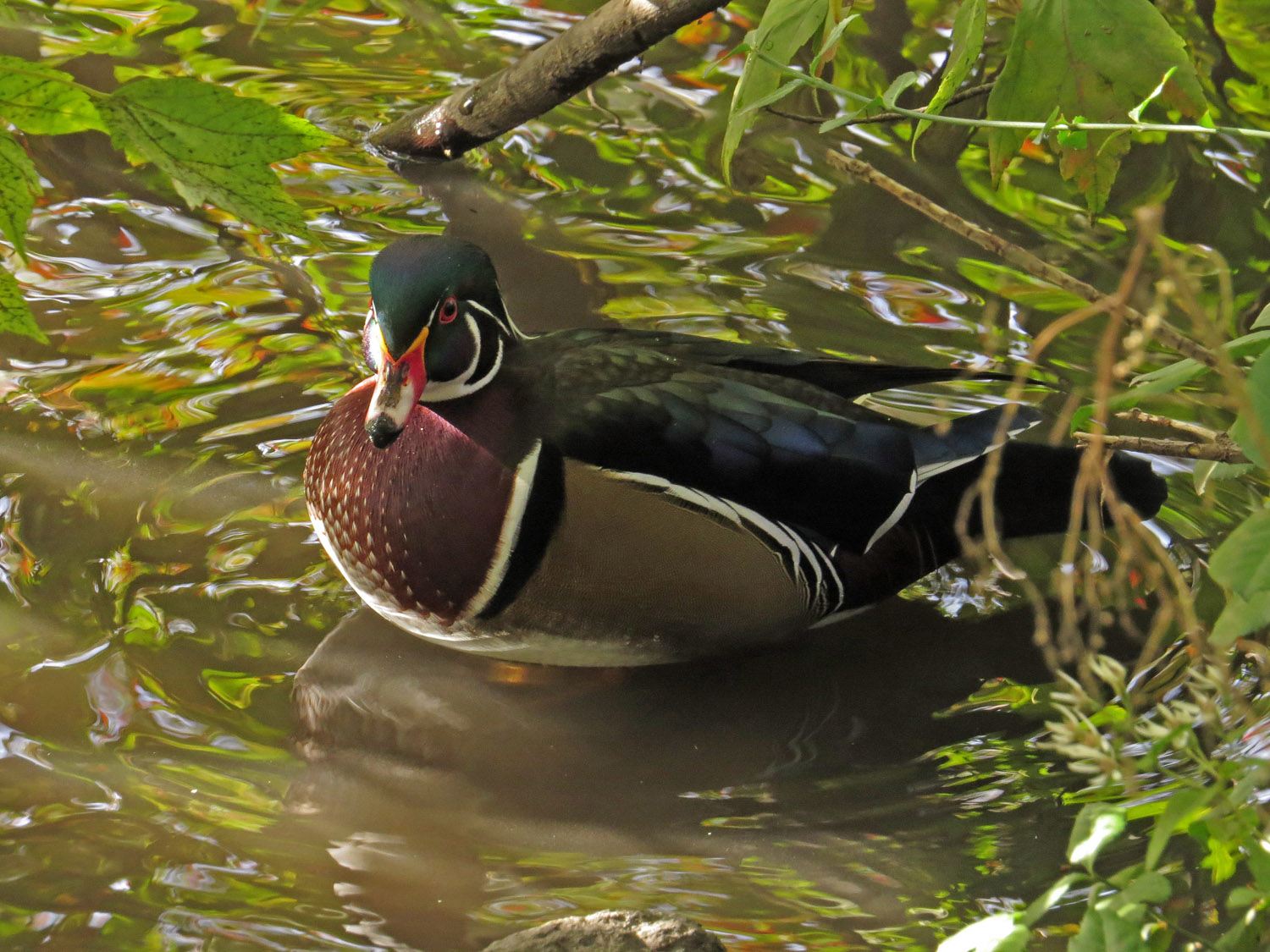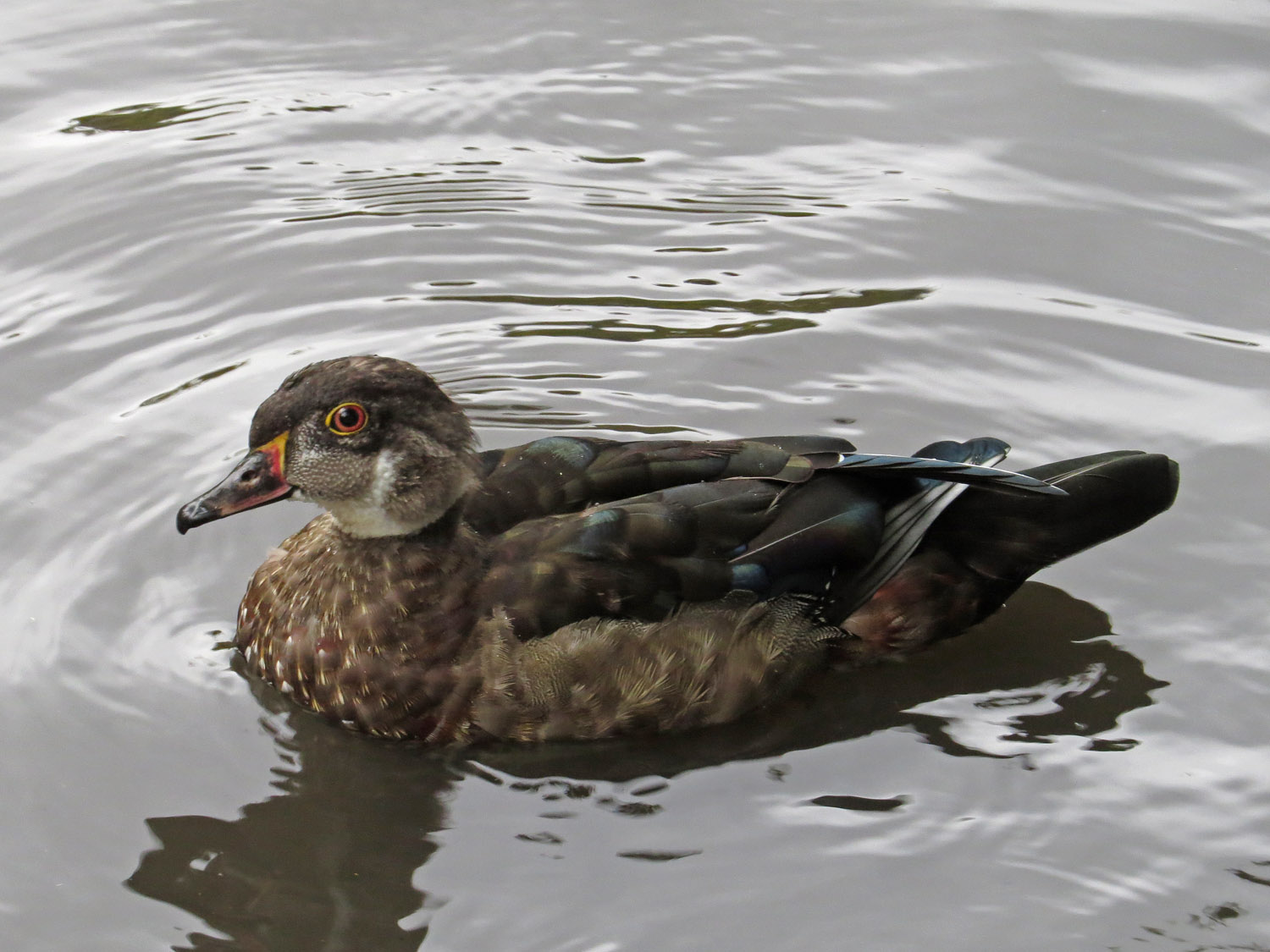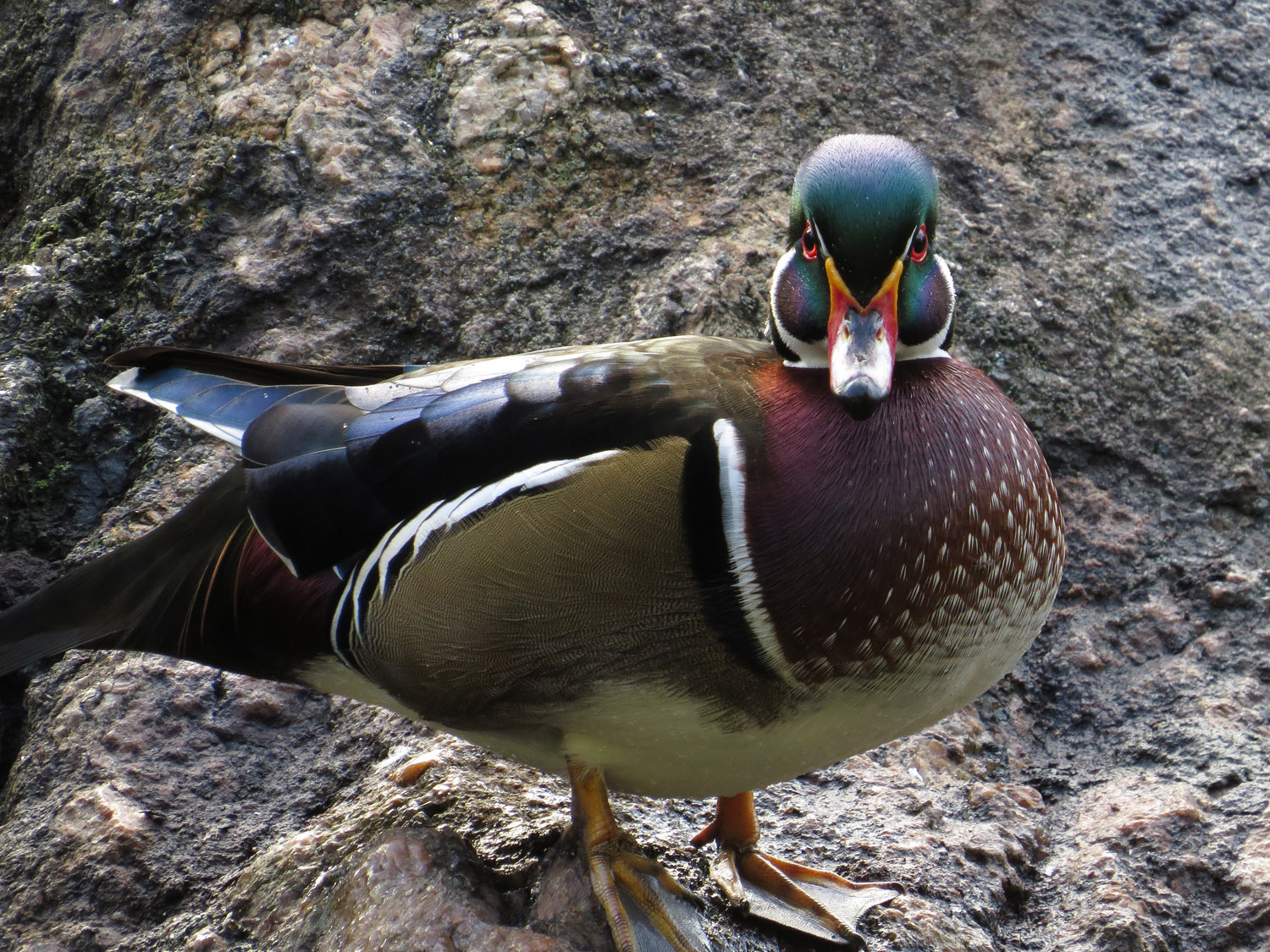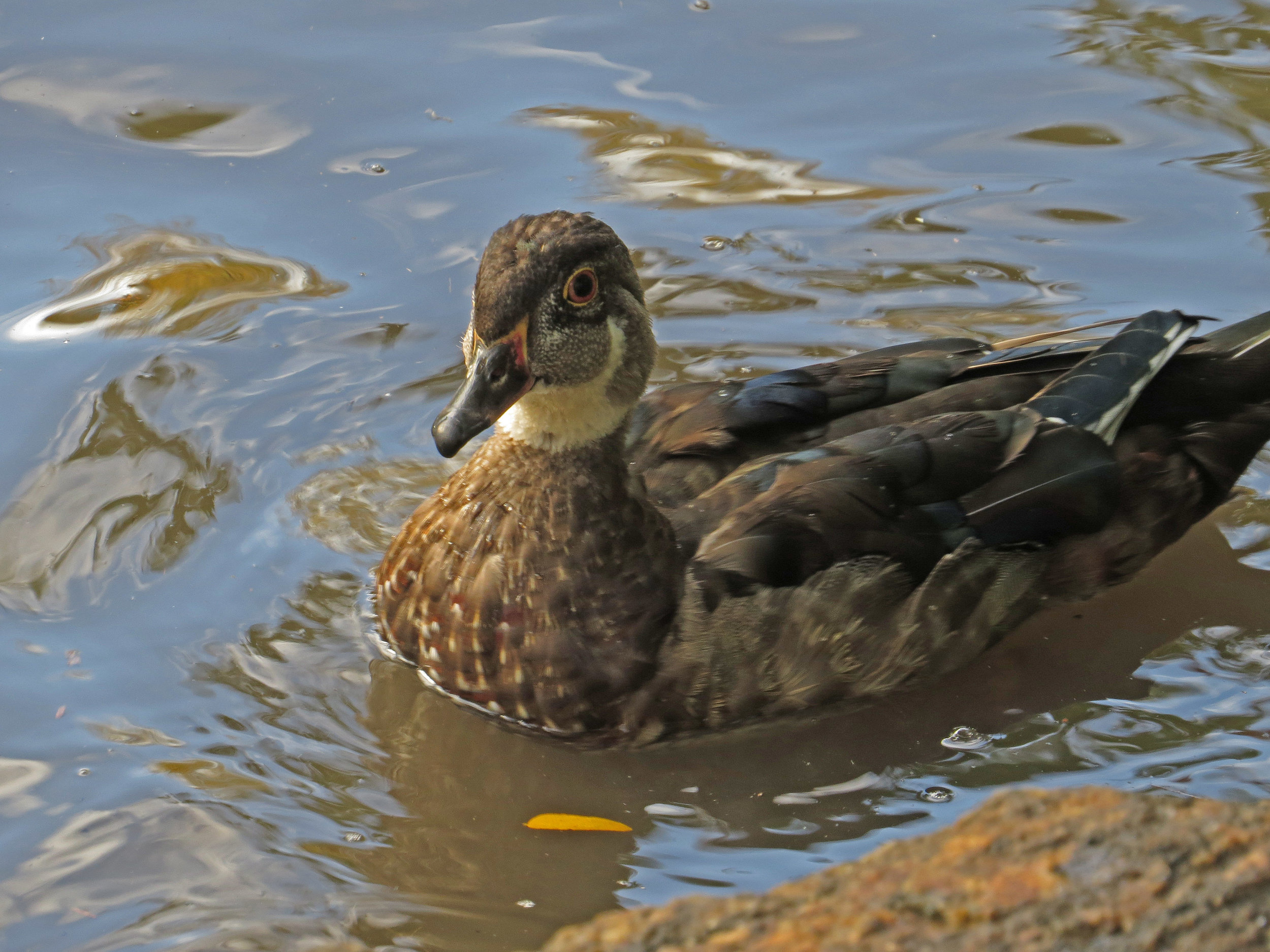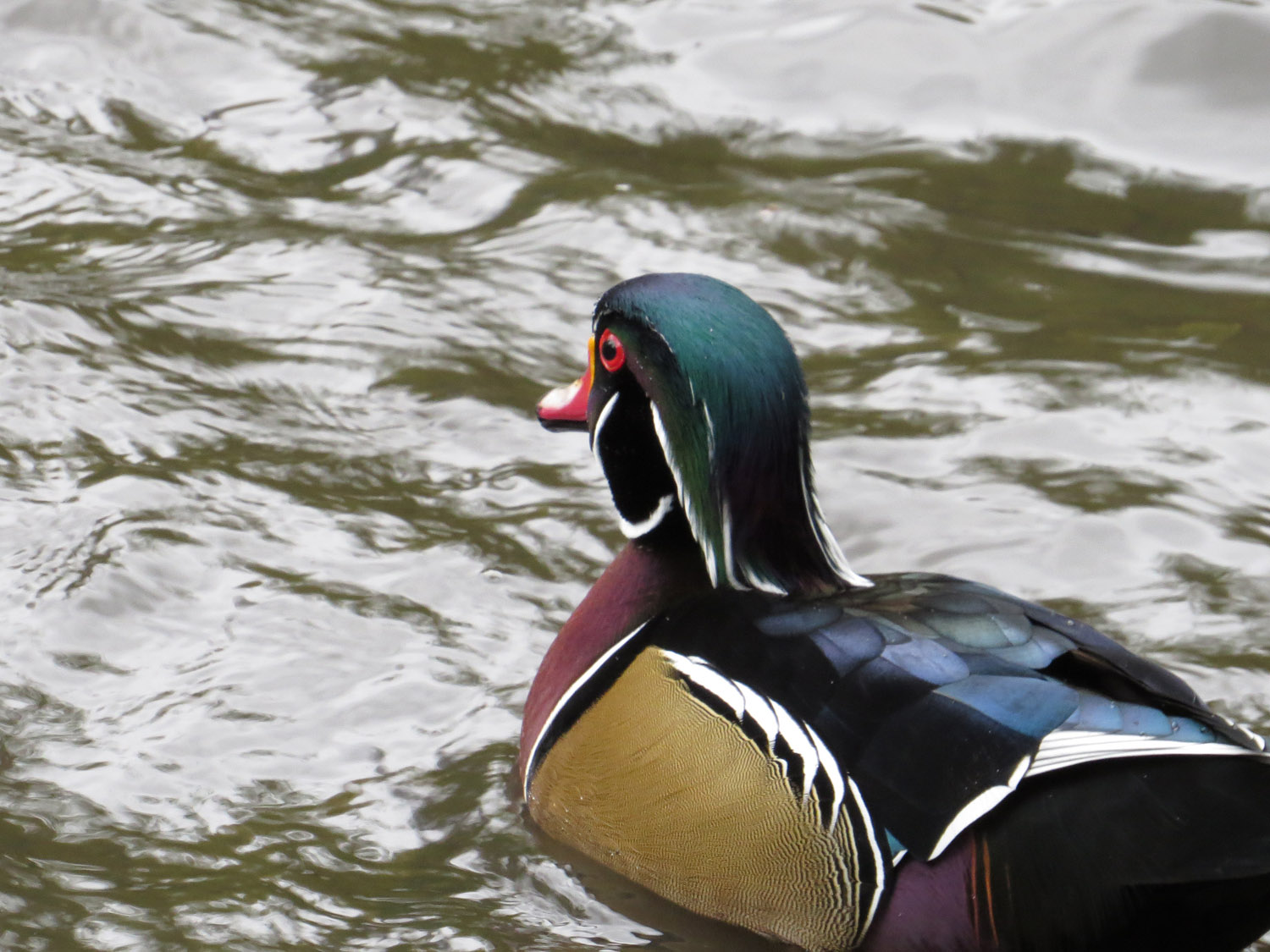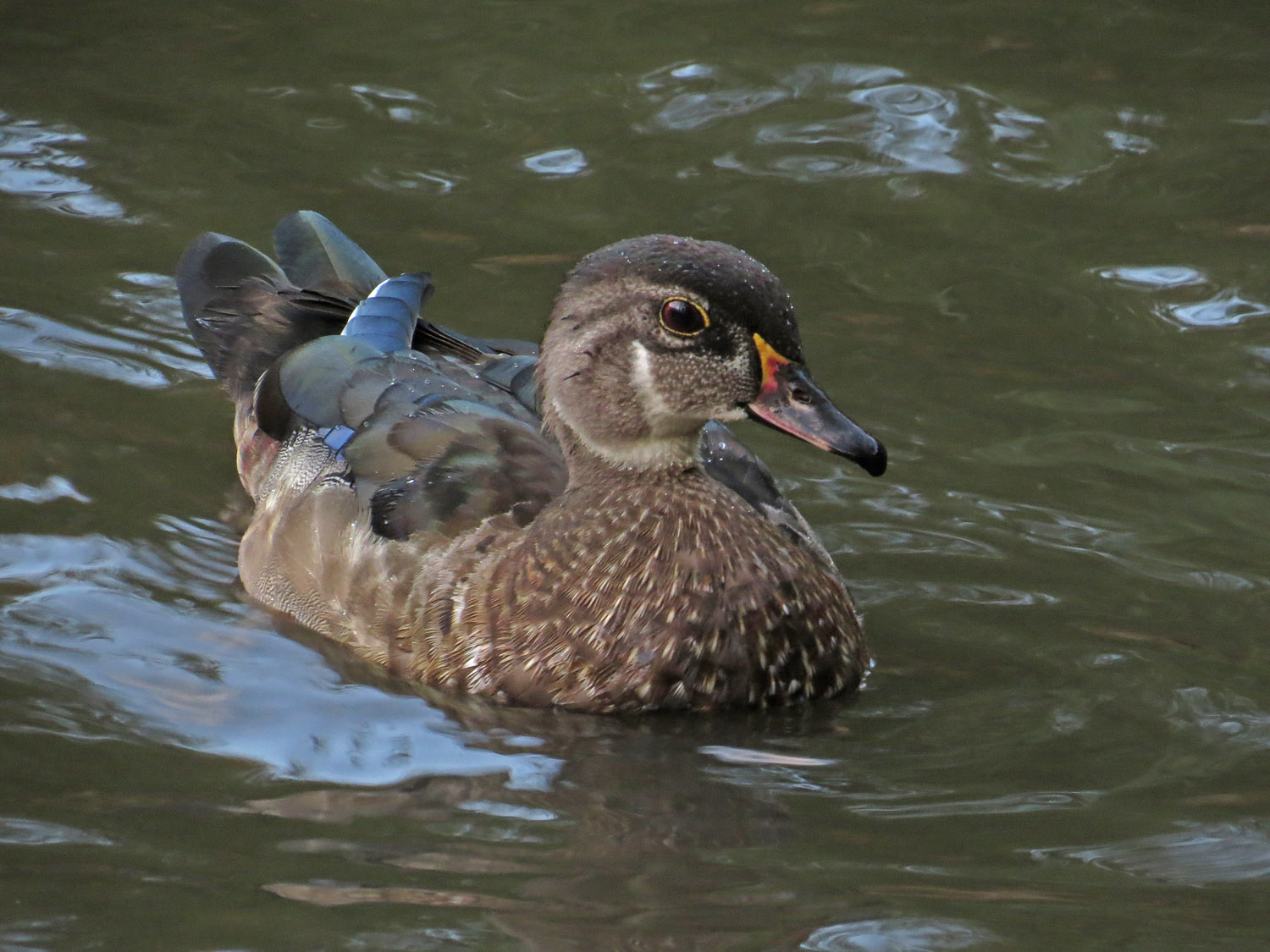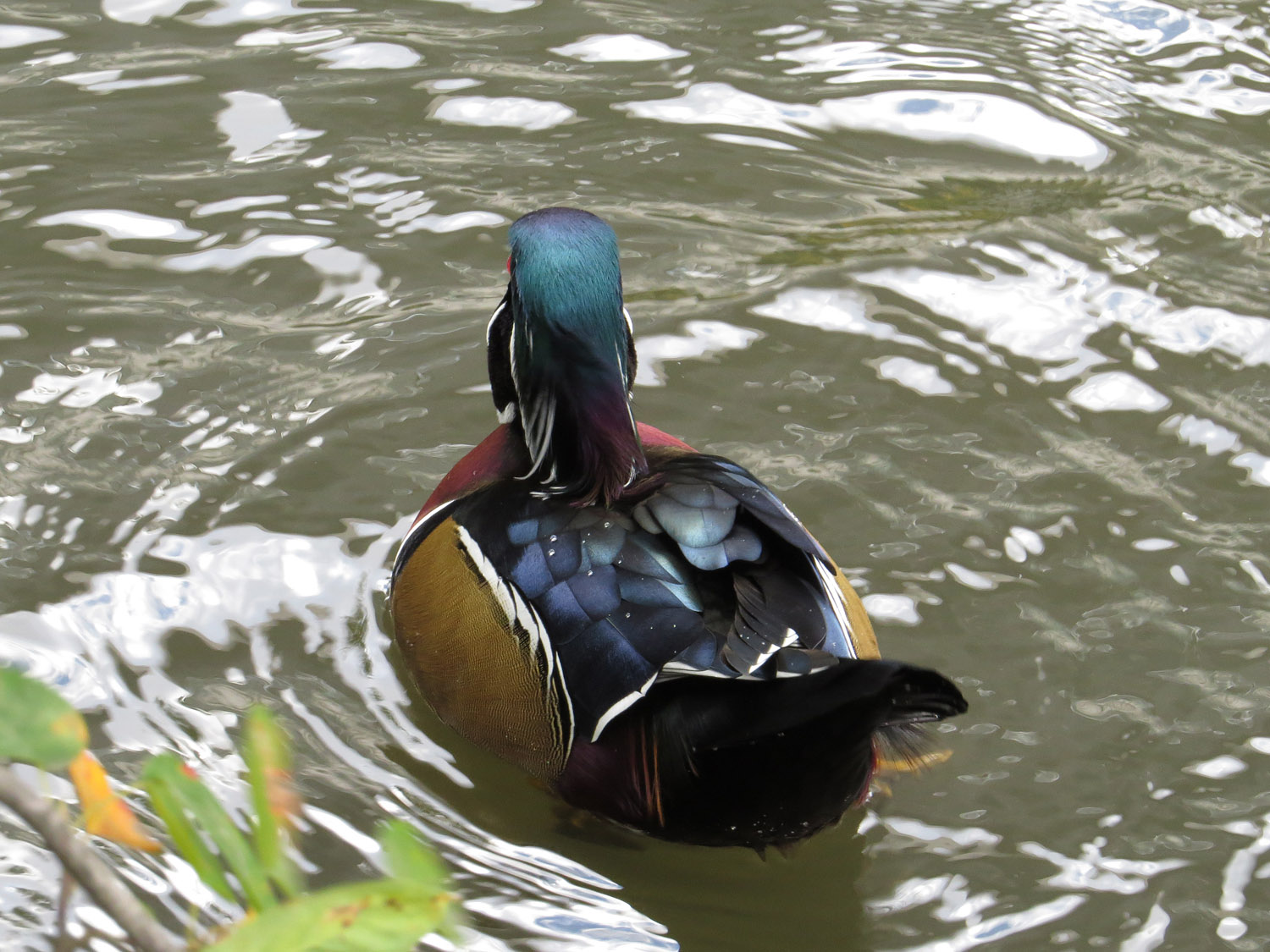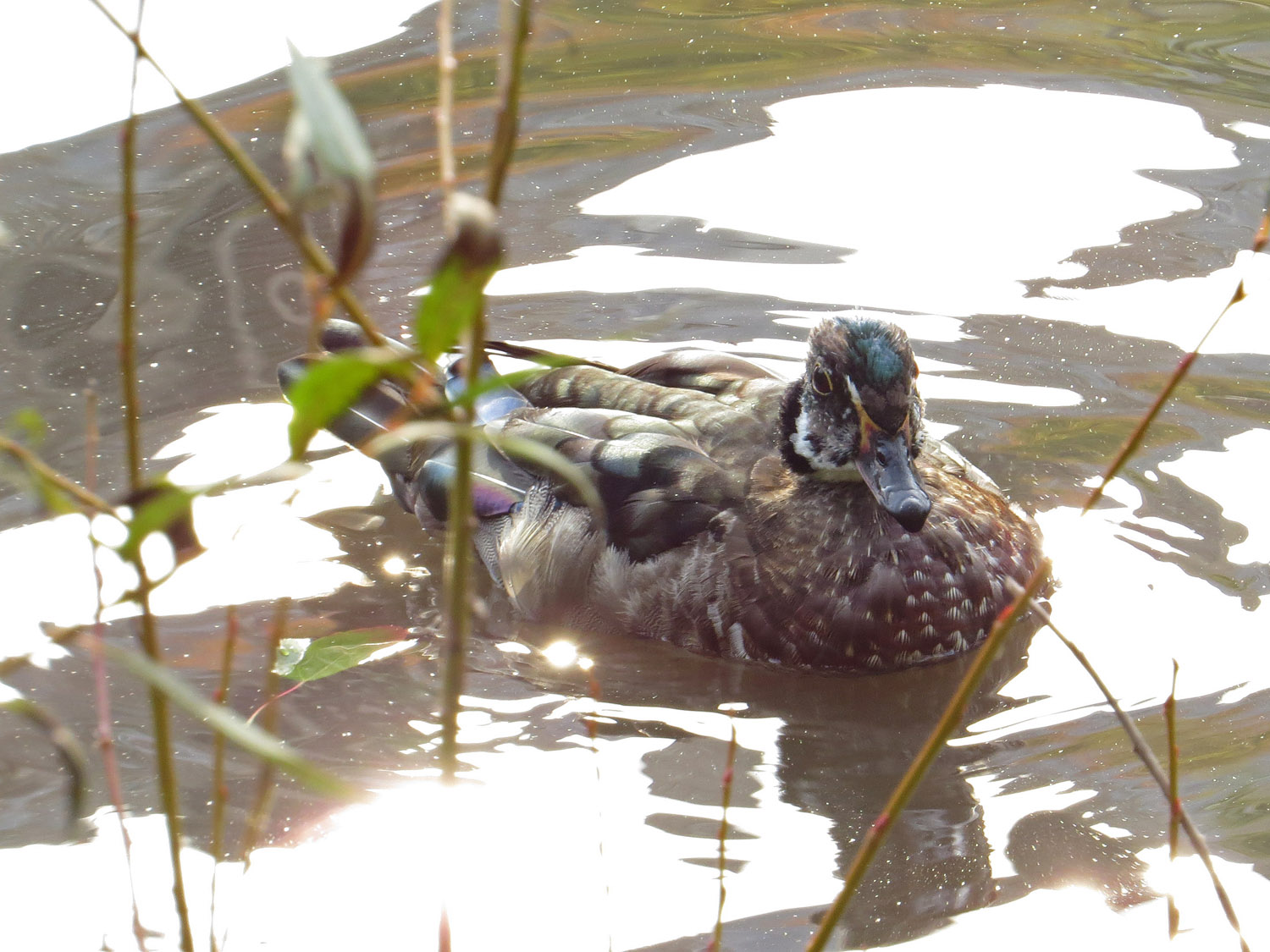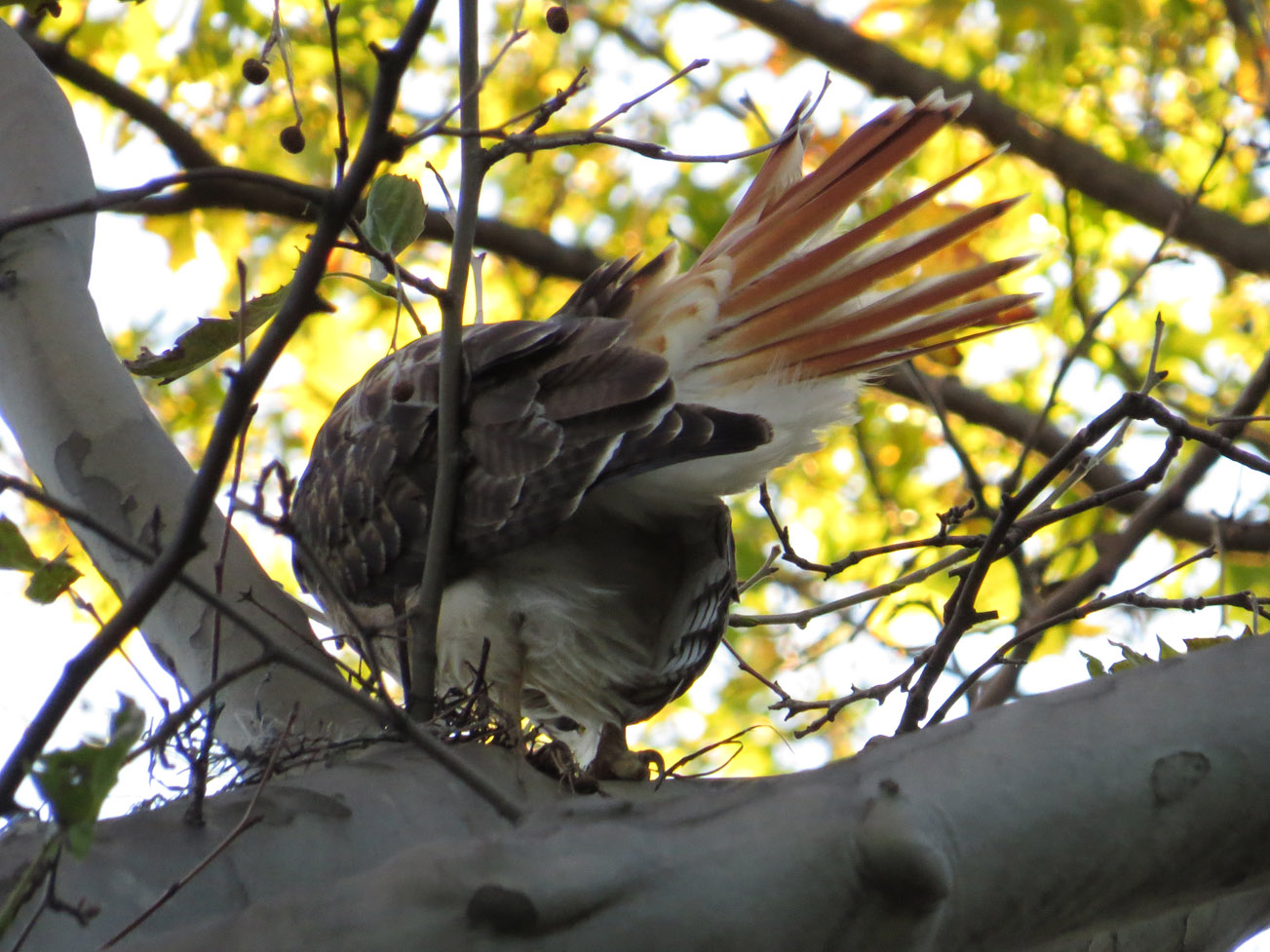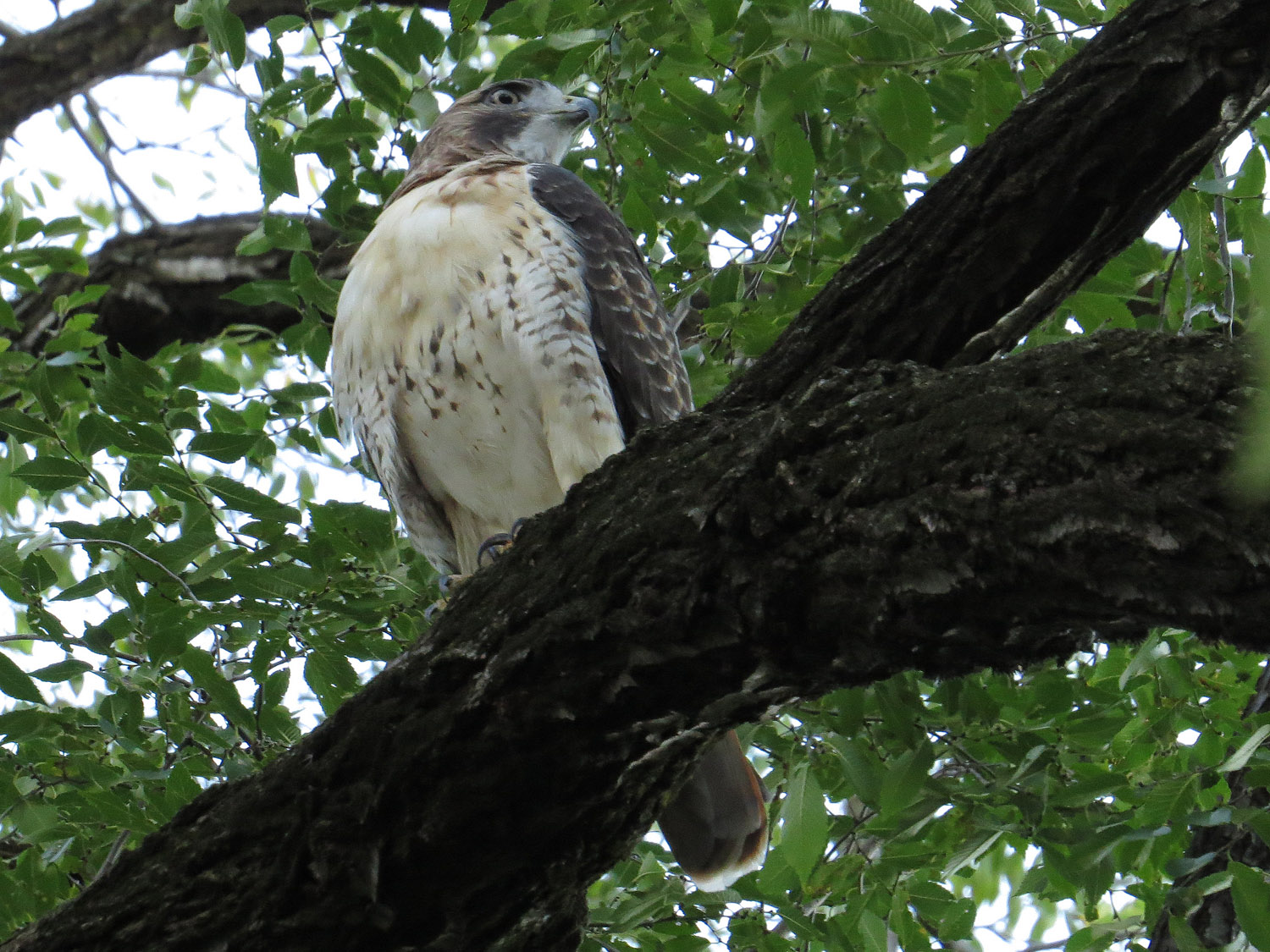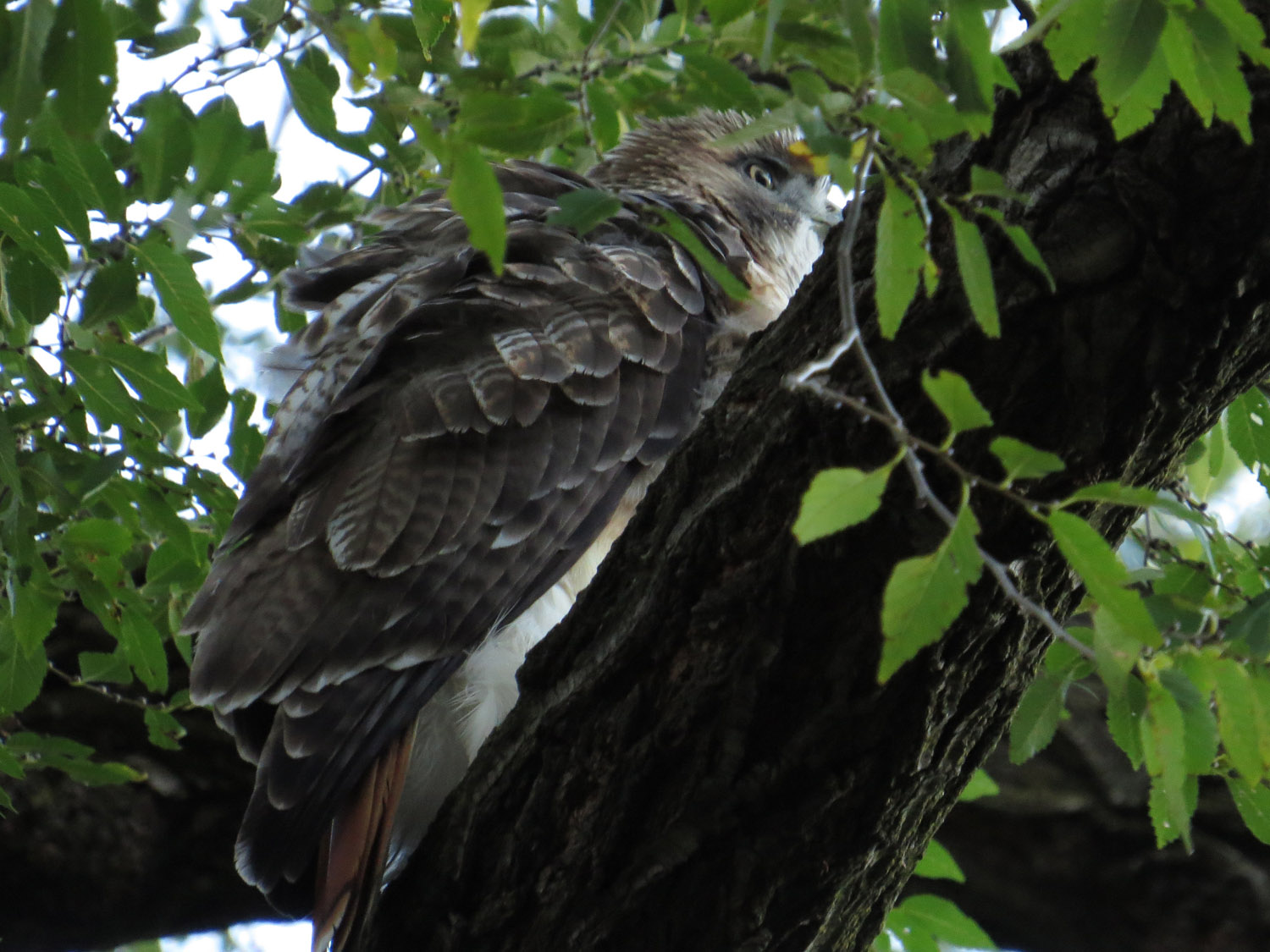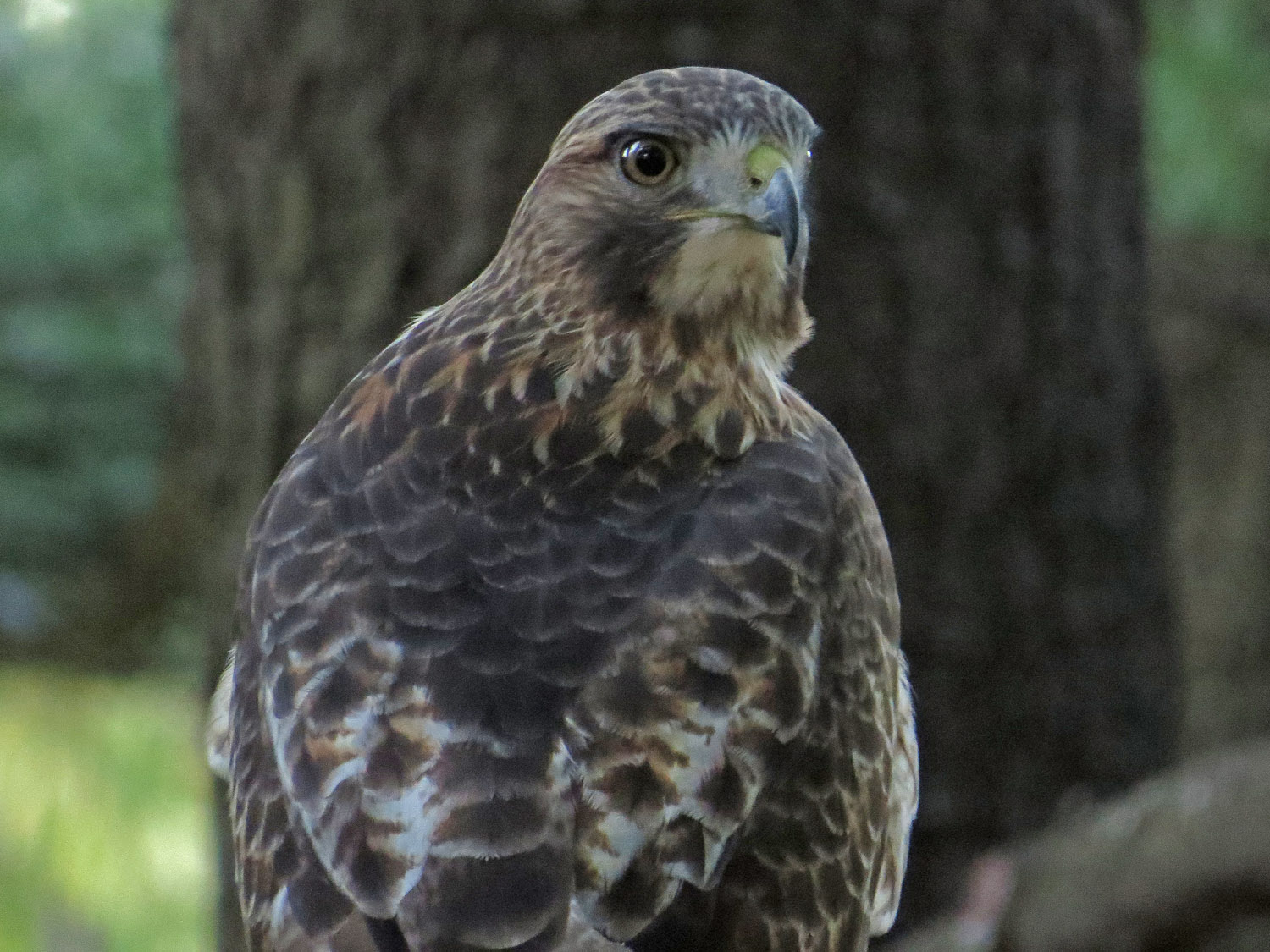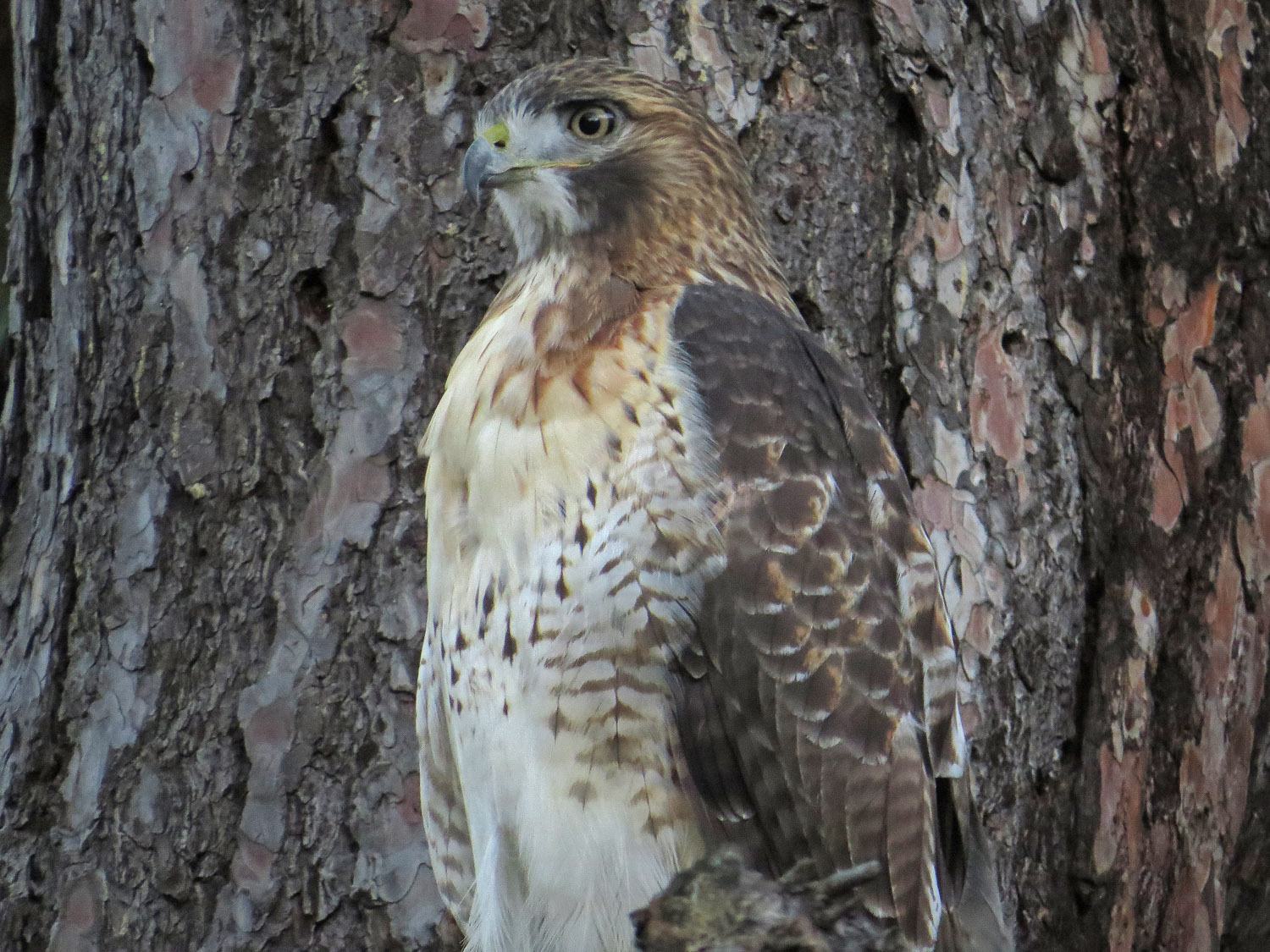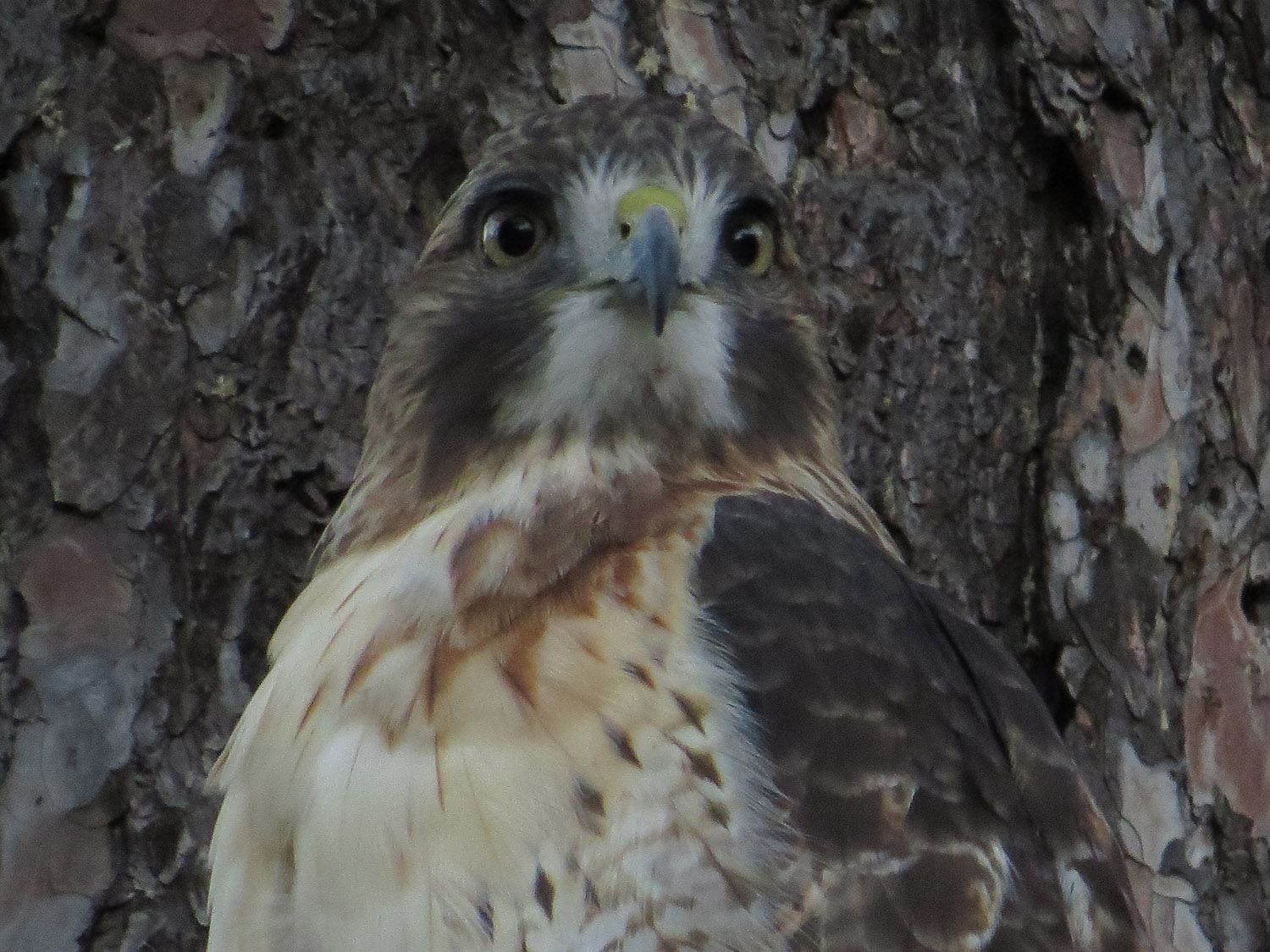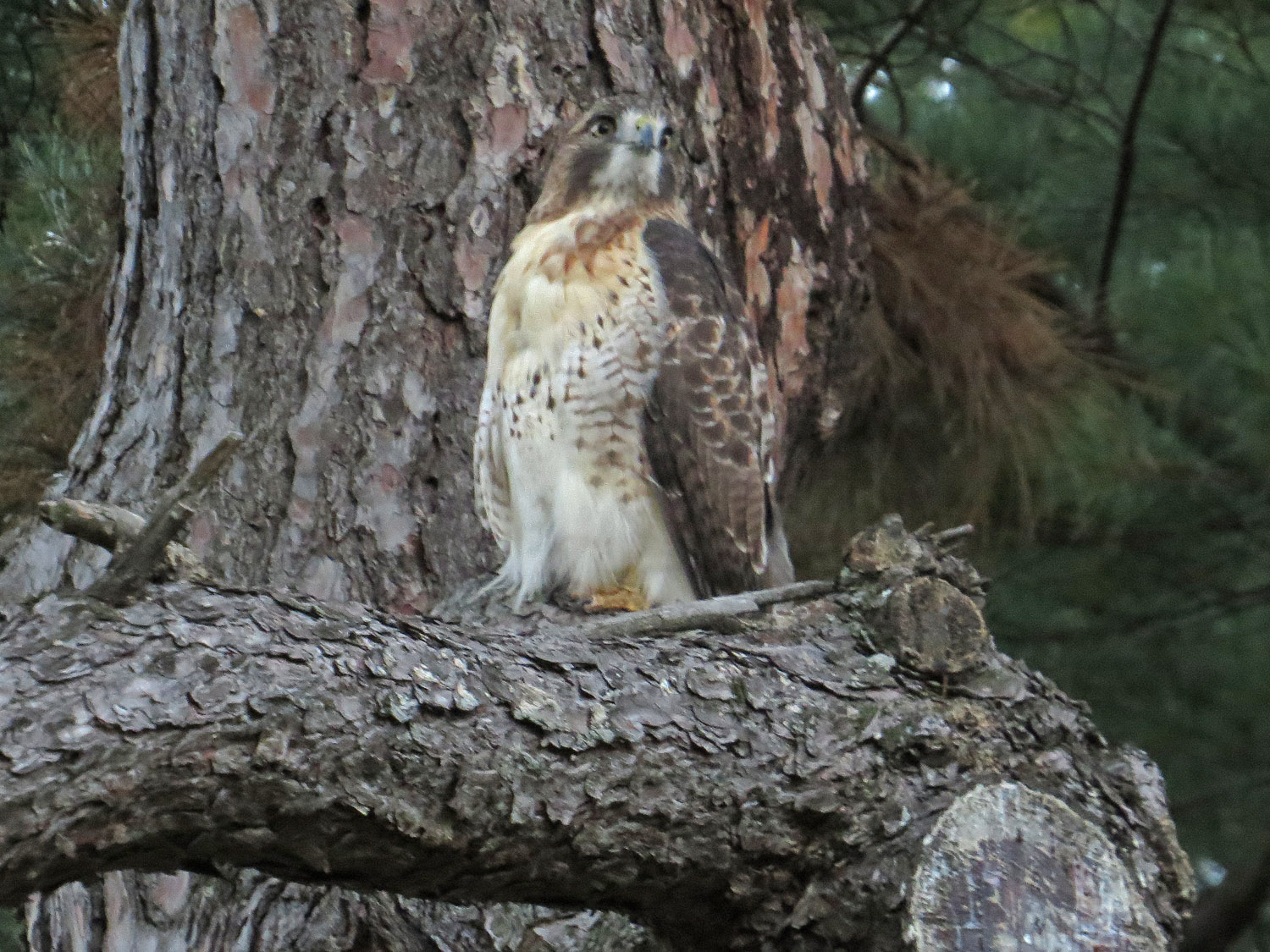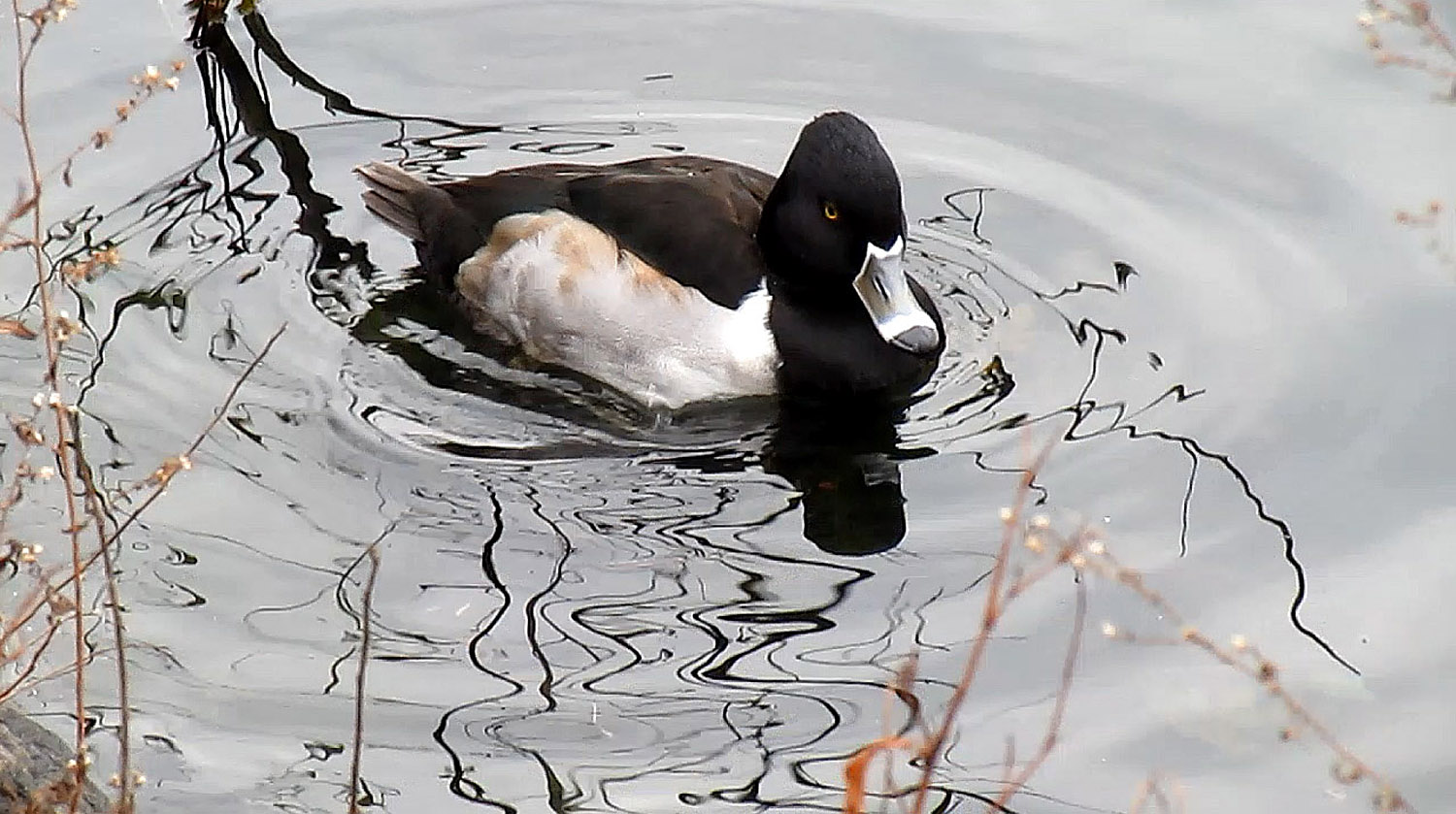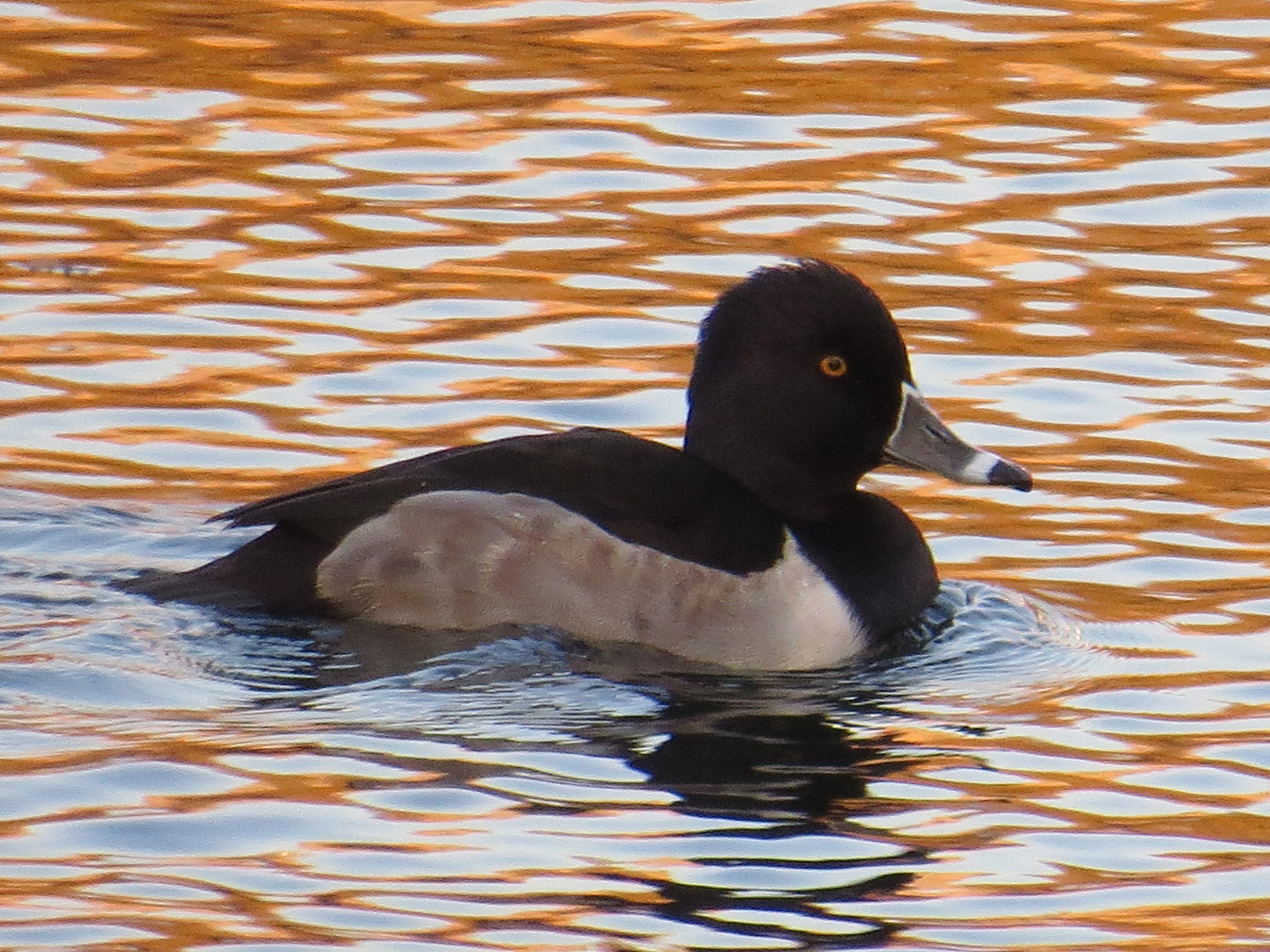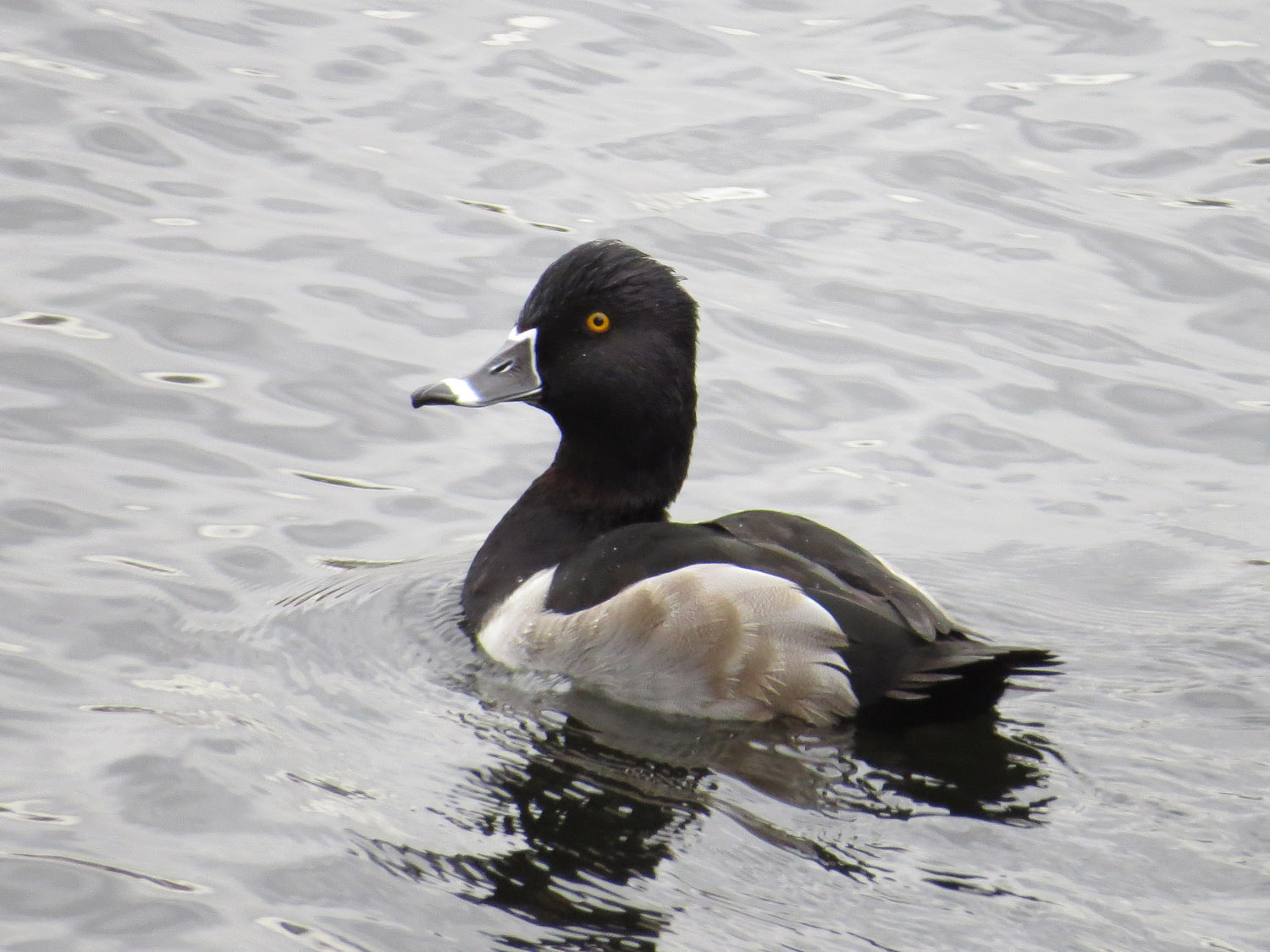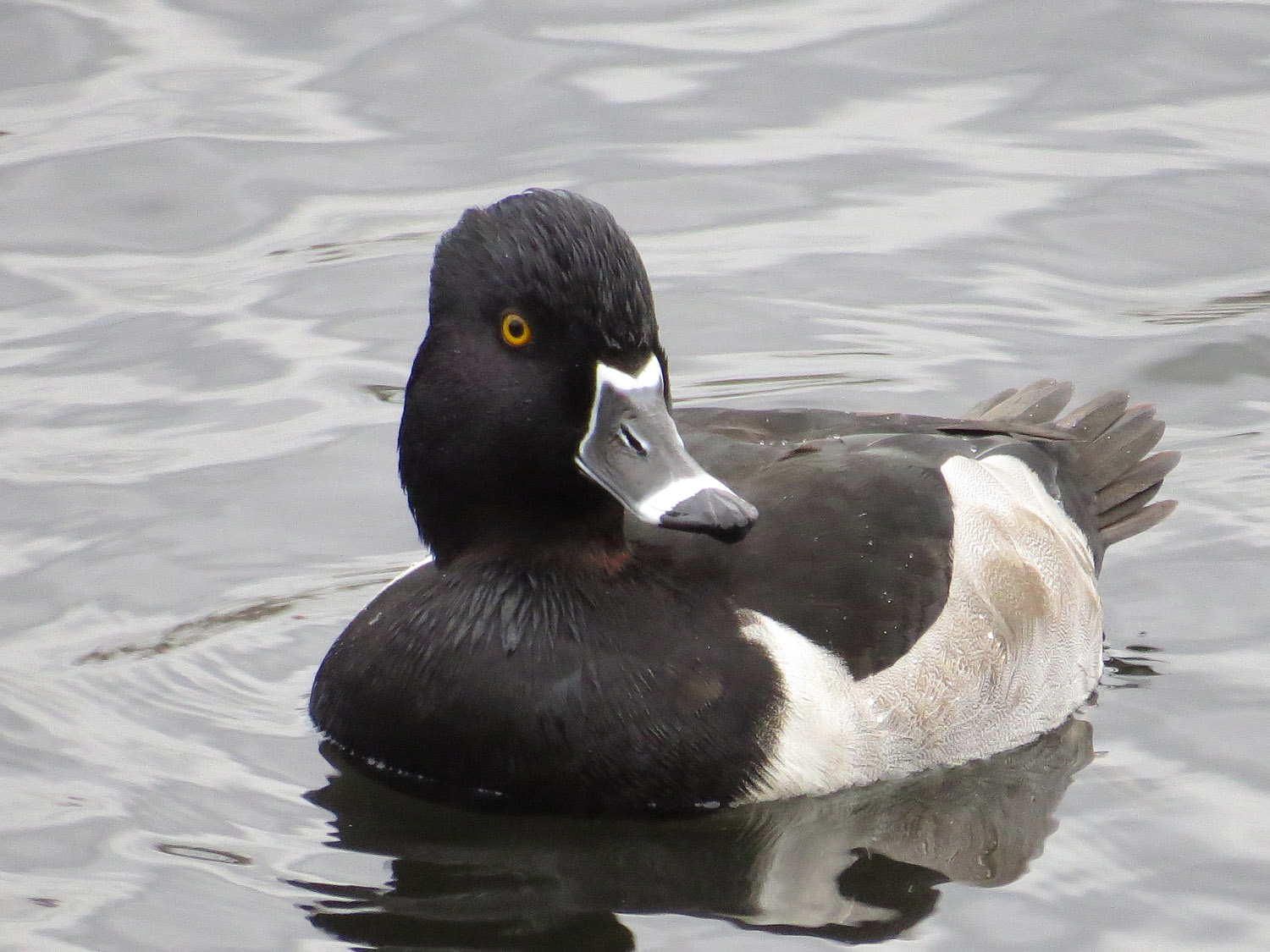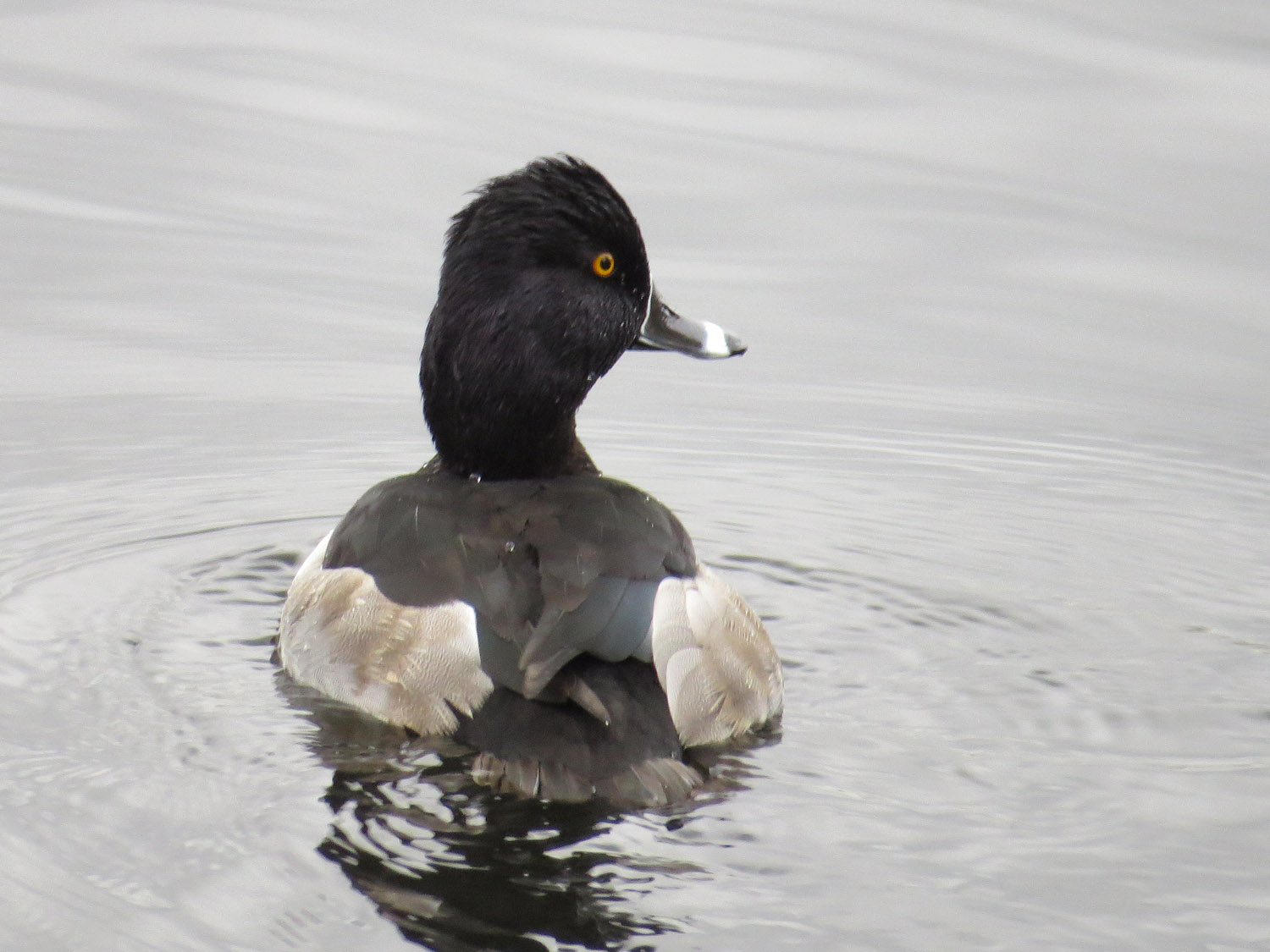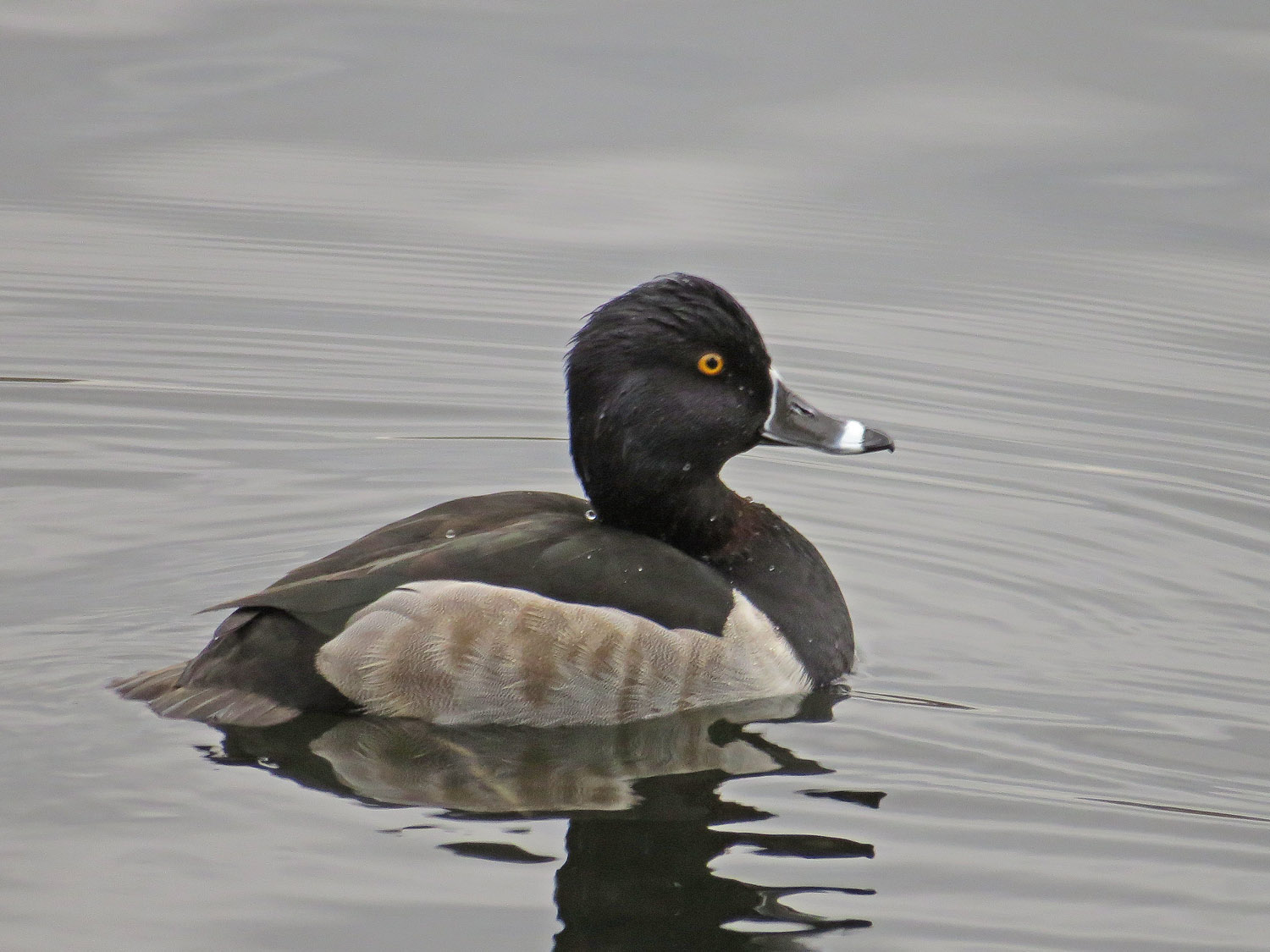For the past several years, young wood ducks have arrived at the Pond to learn from the master of masters of wood-duckieness: Woody, Prince of the Pond. They have learned how to squeak at the other ducks, chase the mallards with mouth wide open, evade the pecks of larger ducks, learn to coexist and survive with other duck species, and, most important, swim toward me when I call out "Woody! Woody! Woody!" so that they are sure to get lots of peanuts.
Uncle Woody and his student, Junior (or Nephew), Oct. 13, 2013
Woody, Oct. 24, 2016, at the Pond
Junior at the Pond, Oct. 21, 2016
The first week of October, a new student arrived at the Pond. I've been calling young male wood ducks who arrive at the Pond "Junior," since although they are all woodys, none of them can really be Woody! (Figure that one out.) And while this youngster is in town, I have decided to refer to Prince Woody as Uncle Woody! Sometimes I call the younger guy Nephew. He doesn't seem to mind.
I have created a new video to celebrate the mentorship of Woody and the mentoreeship of Junior 2016. How long will Junior stay at the Pond? One year, a student stayed all winter. Other years, the youngsters have disappeared during fall migration. The music for Uncle Woody! is Beethoven's second string quartet, in G, performed by the Pascal String Quartet.
Wood ducks are most often very shy and tend to hang out with other wood ducks. (Most recently, I saw at least eight wood ducks at Prospect Park, but they were all hanging out together on the other side of an island, and didn't want to be near people.) But Woody is one of a kind, and he has found his own way to survive in the universe. It is no wonder that other wood ducks might want to learn from him.
Could these youngsters be Woody's kids? It is certainly possible, but not likely. Wood ducks do not mate for life, but are instead "love 'em and leave 'em" guys. But Woody really seems to enjoy the kids' company, and, for a while, he seems to remember that he is the most wood-ducky of wood ducks, and not actually a mallard.
The first year I saw Woody interacting with other wood ducks, he seemed rather irritated to have the relatives in town. But the last couple of years he has seemed to really enjoy the visitors. When he leaves in the spring, it is usually with the pair of mallards he likes to hang out with in the summer. He comes back in the summer to molt, and I remember one year that other wood ducks joined the molting process. When new wood ducks appear, I always hope at least one will stay to learn from the Prince of the Pond.
I never get tired of watching Woody and seeing how he navigates the world and his own small portion of it.




